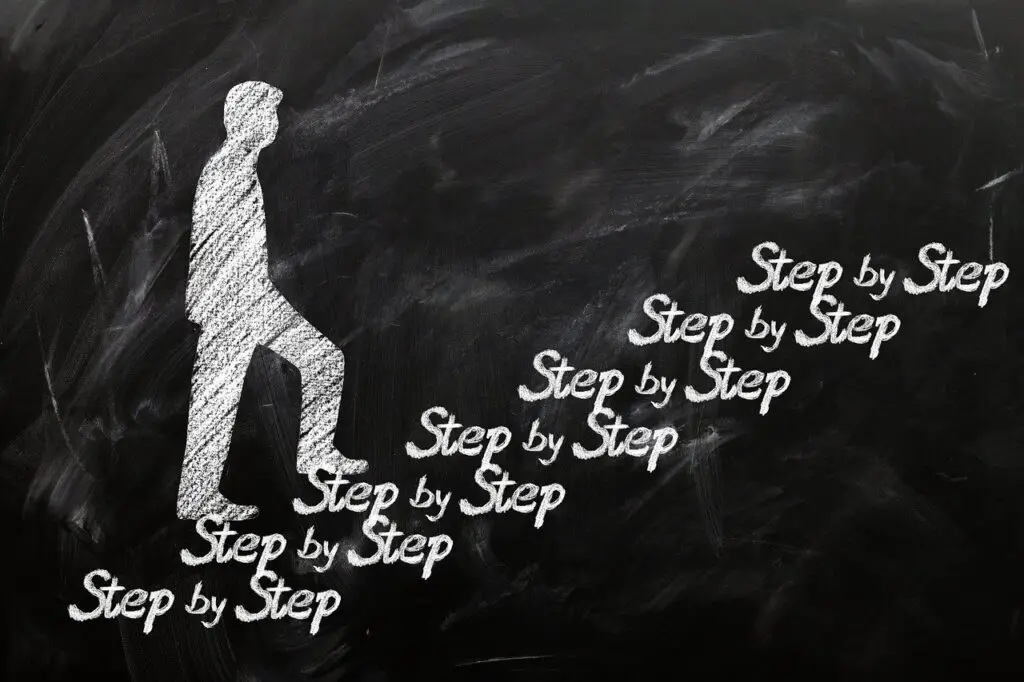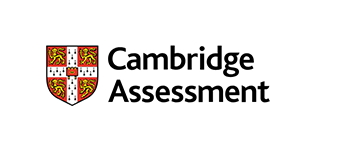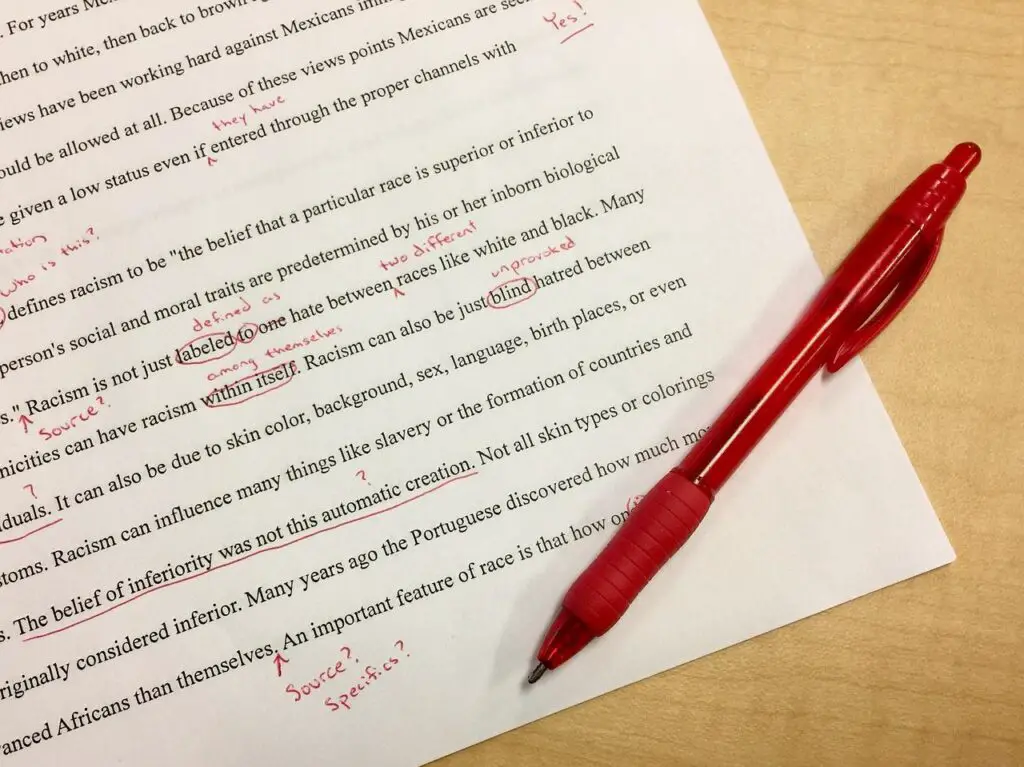Writing. Like it or not, it’s a massive part of learning a language, and for English students, it can be the toughest skill to overcome. It’s also the most neglected by EFL/ESL teachers.
Why? Because it’s hard. It takes a lot of effort for students to plan, write and edit a long assignment, and giving useful corrections is a time-consuming process for teachers.
But it’s important you help your students improve. Emails to colleagues, academic papers, official reports and even messages to friends all require practical writing skills, and beyond that, it’s a productive exercise that boosts grammar, vocabulary, and communication.
In this article, I’m going to show you how to teach EFL/ESL writing in a way that students enjoy and benefit from, while not overwhelming you with hours of marking time and unnecessary stress.
This is a comprehensive guide. The 16 steps cover attitudes to writing, choosing the best assignments, giving your students the right instruction and finally providing high-quality feedback.
So get your pencils ready, there’s a lot to get through!
1. Break down barriers to writing
For many, writing is a real struggle. Whether it’s because they suffer from analysis paralysis, have difficulties spelling, or any other negative experience related to the activity, there are plenty of mental barriers that need to be broken down.
As a teacher, you may share some of these feelings. Perhaps when you were younger, a teacher used long writing tasks as a punishment, or you got given a corrected essay covered in red ink showing you how terrible you were. This kind of thing inhibits creativity and confidence.
So how do we overcome these roadblocks? Here are some ideas:
- Do free-writing activities which aren’t marked, and students can write whatever they like with no pressure.
- Give plenty of praise for effort rather than quality of writing.
- Don’t expect perfection. Focus on what students did well instead of highlighting every minor error.
- Make writing a group effort rather than a lonely experience.
It takes time to work through these barriers, but with a positive attitude and the rest of the steps in this guide, you’ll get there.
I’ve actually written a whole article on the issues EFL/ESL students have with writing, so for more on that, check out 9 Writing Problems For EFL/ESL Students & How to Solve Them.
2. Do a little, often
Writing is a skill. And like all skills, regular practice is the best way to improve. Writing assignments typically get set infrequently and are very long. The space between them means students forget what they learned last time and long tasks are overwhelming.
A much better strategy is to do a small amount of writing frequently. Every lesson would be ideal. It can be a simple case of writing down a few sentences on what they did since the last class, or a summary of what they learned at the end of the session.

And you can give frequent homework tasks, too. Instead of a massive 500 word assignment every three months, get them to write 50 words or so every week. This way, you can give them ongoing feedback, which they can immediately implement. More on giving feedback in step 14.
3. Plan tasks to have a specific focus
Most writing assignments I see are too general. They’re practicing “writing as a whole”, something which encompasses dozens of different skills, and is very hard to teach.
My favoured approach is to break things down into smaller parts. For example, let’s say the writing task is to report what happened during a school trip. I would focus on a maximum of three things:
- Past tense verbs
- Time connectors (first of all, next, after that, at the end, etc.)
- Use of paragraphs for major ideas
Ideally, we would have been studying past tense verbs and time connectors recently, so students can apply that knowledge. Then we’d think about how to use paragraphs appropriately in the class before setting the task.
If it’s a class of younger students, or less confident beginners, I’d only focus on one or two things. Three might be too much.

It’s also important to tell students what the objectives of the task are. This way, they know what to concentrate on and they’ll have an idea of how they’ll be assessed.
This method takes away some of the stress, too. If students have clear, specific targets, they can get on with it rather than worrying about everything.
4. Remember it’s not just grammar and vocab
One reason writing tasks tend to be so unpopular is because they end up being just another way to test grammar and vocabulary. After all, that’s what most teachers use to assess work.
But there’s far more to writing than just remembering words and grammar rules. Students should think about tone, paragraph structure, organisation of ideas, varying sentence length, engaging the target audience, and applying conventions to the specific type of writing.
Now, if you’re teaching younger students, these things are less relevant. For them, it’s more about getting their ideas into words. But for teenagers and adults, they’re vital skills.
I’m a big fan of the Cambridge English way of assessing students. For those who don’t know, Cambridge English is one of the most important providers of proficiency exams for EFL/ESL students. Their certificates are recognised around the world by universities and employers. They’re big hitters in the industry.

For their most popular exam, the B2 First, their writing assessment is divided into four equal parts:
- Content: Did they answer the question and write things relevant to the topic?
- Communicative achievement: Did they use the correct style, tone and conventions for the writing task?
- Organisation: Is the writing logical and ordered, with appropriate paragraphs, and is the information easy to follow?
- Language: Did they use a good range of grammar and vocabulary, and use it accurately?
Only one quarter of the marks given cover grammar and vocabulary. The rest are for other skills which EFL/ESL teachers often disregard, or never even think about.
Don’t make that mistake. Grammar and vocabulary are important, but they’re not everything.
Click here for the B2 writing assessment guide so you can look at it in more detail.
5. Choose interesting topics to write about
This one is pretty obvious. Students prefer to write about things that interest them rather than generic or irrelevant topics.
What you have to figure out, though, is what your students like. If you’ve taught them for a long time, you’ll have already developed a relationship with them and have a good idea of their hobbies and preferences. But if you’re starting with a new set of students, you won’t know them so well.
Take some time to find out! A great way of doing this is with a needs analysis. A needs analysis is a process you should do early on, ideally in the first class, and it tells you the strengths, weaknesses, preferences and personalities of your students, and is vital for informing future planning.
To learn how to perform a needs analysis, read my guide Needs Analysis for Private EFL/ESL Lessons. The article is written for private tutors with individuals or small groups, but the concepts apply to big groups, too.
6. Vary types of writing task
A sure-fire way to make your students hate writing is to make them do the same type of task over and over again. If you set them an essay every week, they’ll get better at essays, but they’ll grow to hate them with a passion.
As mentioned in step 4, an important skill is altering tone and applying conventions appropriately, depending on the purpose of the task.
For example, a formal letter appears differently to an email to your best bud. Stories contain slower, meandering, flowery, descriptive passages followed by quick turns of pace. And articles have lots of rhetorical questions, right?
Not only does switching up the task keep things interesting, but it teaches students different ways to express themselves. The main writing types for EFL/ESL students are:
- Formal letters
- Informal emails
- Stories
- Reviews
- Articles
- Reports
- Essays
7. Show students how to write
I wish I didn’t have to include this in the guide, but the truth is, I’ve seen so many times when teachers set a writing task and tell students to complete it without any instruction. They just expect them to magically know how to do it.
And sure, people can write words. They can follow the patterns in their own language and string sentences together. But without direct instruction, they can fall into analysis paralysis, or end up translating directly from their own language, which is a bad habit that results in major errors.

In steps 4 and 6, we talked about different writing tasks, tone, conventions, formality etc. How do students know how to do any of this if you don’t show them?
Write something yourself. Create a model example on the board, one sentence at a time. Remember those few things you’re focusing on? Now’s the time to emphasise them and help students see how to fit them into the writing.
When they see how it’s done, they’ll have much more confidence and competence doing it themselves.
8. Introduce connectors
This step is a little more specific than others. In general, teaching connectors is a great idea to improve the organisation of your students’ writing, but it’s especially important when preparing for exams.
Exam assessment seems to be obsessed with connectors. The correct use of “on the other hand”, “in addition” or “consequently” does wonders for boosting grades.
And even if you’re not preparing students for an exam right now, chances are they’ll do one at some point in the future. So provide them with some useful connectors. The most common types are:
- Ordering ideas (firstly, secondly, finally, etc.)
- Adding more information (moreover, in addition, what’s more, etc.)
- Contrasting ideas (on the other hand, however, nevertheless, etc.)
- Showing cause and effect (consequently, as a result of, due to, etc.)
There are plenty more to get familiar with, but the ones in this list will go a long way for intermediate and advanced students.
9. Delineate formal and informal
One of the most important aspects of writing is getting the register (formality) correct. Students know this is true, but they might not be aware of how to write formally or informally. They might also be a little unsure about which types of writing should be formal and which shouldn’t.
Here’s a general overview:
FORMAL writing tasks
- Letters (job applications, complaints, requests)
- Essays
- Reports
INFORMAL writing tasks
- Emails to friends/family
- Reviews
- Articles (like this one)
Stories don’t easily fall into either category. For the most part, they can be considered as neutral, but can veer either way depending on the genre and audience.
There are four main differences between formal and informal.
| FORMAL | INFORMAL | |
|---|---|---|
| Contractions | None (e.g. They will) | Whenever possible (e.g. They’ll) |
| Choice of language | Technical and longer words (e.g. recuperate) | Colloquialisms and phrasal verbs (e.g. rest up) |
| Pronouns | Avoid using first person pronouns (I and We) | Frequent use of first person pronouns (I and We) |
| Tone | Serious and respectful (never use the exclamation mark) | Spontaneous and positive (exclamation marks are allowed) |
10. Do guided writing activities
One way of making writing more engaging is to do a collaborative guided writing activity in class.
This is really simple. One student is the writer (you can take turns to share the responsibility). They write a sentence on the board and pause. The rest of the class then gives feedback. This can be correcting grammar mistakes, suggesting more advanced vocabulary, or altering the tone or register.
At any time, the teacher can intervene to clarify grammar points, or guide the class in the right direction. They should also moderate the conversation so everybody can contribute.

Keep going like this until the writing task is finished. The collaborative effort means that the writing will be of a much higher quality than if a student wrote it alone. Everyone learns from improving it together.
Not only this, but it boosts confidence, and creates an atmosphere of mutual trust and teamwork. Everyone gets involved actively.
As a teacher, you can also use this to assess students’ skills and identify any weaknesses.
I’d say this kind of activity is difficult to manage with large classes (20+), especially with children, so it may be better to split them into smaller groups.
11. Provide plenty of structure
Let’s say you had a great session teaching various writing skills and your students were motivated to get started writing. You set a writing task for homework.
So, students go home and look at the prompt and the expanse of white in front of them. What was it they learned in class? Connectors. But what connectors were they? How do you spell them? And which ones were formal and which were informal?
What’s happened here is the student has gone from having all the information to having none of it. That’s stressful. They can’t apply all that great stuff from class, because it isn’t ingrained in their minds… they need to practice it with structure first.
Music students aren’t expected to practice a new song from memory. They get the notes on a sheet. Why should you expect EFL/ESL students to practice writing without any prompts?

Provide them with lots of resources. Give them the model example you did at the start. Let them make a big list of connectors and formal/informal phrases, and even give them a photo of the guided writing you all did in class.
Of course, they shouldn’t copy directly from the model writing. But they can use it as a basis to write their own. Imitation comes before innovation.
As they gain confidence, you can start taking away some of the structure until they’ve mastered the required skills.
12. Encourage editing (and show them how to do it)
Editing is the most neglected part of writing. Going through your own work and picking up mistakes as well as areas where you can take things to a higher level is a skill everyone should know, regardless of subject or language. All good writers do it, at least once per draft, and often multiple times.
The guided writing activity in step 10 is a collaborative editing exercise. But students should learn how to do it on their own, too.
But so many teachers just say “check your work” and leave it at that. The problem is, many students don’t really know how to edit, and end up just reading their work without direction and changing very little. They see it as pointless, because it never has any effect.

Don’t let this happen to your students. Here’s my three-stage editing process which you can train your students in.
Stage 1: Grammar and spell check. Go through the text and look for mistakes, focusing on things like:
- verb forms (past tense, past participle, third person singular)
- Plurals have the “s” added.
- Spelling errors
- Punctuation mistakes
Stage 2: Tone, register and coherence. Make sure language is appropriate for the type of writing task, and your points are easy to understand:
- Formal/informal language
- Make sure you have lots of connectors
- Ensure paragraphs are clear and distinct
- Check sentence length is varied
Stage 3: Improvements. Find words or phrases that you can make even better:
- More advanced and specific vocabulary
- Try to use more complex grammar structures (present perfect, conditionals, passive)
- Use more sophisticated connectors (e.g. However instead of But)
Like with the previous writing skills, you should show an example of how to do this kind of editing, so your students can imitate it.
13. Organise homework effectively
I find writing tasks are best done as homework. The reason is, they’re independent, and don’t require too much teacher input. Class time is better spent with more direct interaction rather than everyone working silently on their own.
This is especially true for private classes. They’re paying for intense tuition, not for you to sit and do nothing while they write.
For large school classes, if you have English a few times a week, there’s no harm in occasionally doing writing tasks in class. Some kids never do homework, so class time may be the only time they’ll practice writing.

A major issue with setting writings for homework is it takes too long for students to get feedback, and organising deadlines and dates can be a bit tricky.
My strategy is for students to hand in their writing the day (or two days) before class. This can be done easily with Google Classroom. They either type it up, or take a photo of handwritten work.
When they’ve handed it in, I will take a look at it and provide feedback ready for the coming class. That way it’s fresh in their mind. If you don’t do this, they have to wait another full week to get feedback on it, by which time their mind has been overtaken by other things.
For more on organising homework, read my article 5 Tips for Setting Homework in Private EFL/ESL Classes.
14. Give focused and gentle feedback
The most common way of marking written work (correcting everything) is also the worst.
First of all, for the teacher, it takes a long time, and a large amount of energy. If you have a big class, it can take hours and hours. I know, I’ve done it.
Secondly, the feedback is often overwhelming. Either there’s so much of it that it drains students’ confidence, or they can’t find a way of taking action on the feedback.
So what should you do? Only correct the important things. Ages ago, in step 3, you decided the focus of the writing task. You chose 1-3 important aspects, then you taught those things in class, and now they’re what you’re going to give feedback on.

The rest doesn’t matter. Okay, that’s not entirely true. You may want to point out major egregious errors, like if your advanced level student is making beginner level mistakes. But generally, resist the temptation to re-order sentences or correct minor mistakes.
Also, don’t just mark things as wrong. I find it better to highlight things and get students to correct their own mistakes. Perhaps give them a prompt like “check your past tense verbs”.
Most importantly, be gentle, and praise good things. This is so underrated, and hardly anyone does it. Highlight the times when students get things right, especially if they’re related to the specific focus. This develops confidence and breaks down mental barriers, like we spoke about in step 1.
To get a more detailed look at giving feedback for writing, read my article Best Method for Correcting EFL/ESL Writing: 9 Step Guide.
15. Consider implementing rewrites
It’s no secret that professional authors rewrite their work several times. Each iteration improves greatly. And in between each rewrite, they often get feedback from trusted friends and colleagues.
You can do this with your students, getting them to rewrite it after your feedback. Now, there’s a caveat with this – students may not like having to do the same task again, and they may see it as a punishment for doing really bad the first time around. This is not the intention. Make sure they know it’s a technique for continuous improvement.

And I wouldn’t bother with this for short writing tasks like the ones we talked about in step 3 – brief descriptions of what they did that week, or lesson summaries. Instead of them rewriting the same text, just get them to do a new, similar task, and implement the feedback in that.
Rewrites shouldn’t take too long. Most of the work has already been done, and it just needs tweaking. They’re a good opportunity to practice editing skills, too. When they rewrite something, encourage them not just to correct mistakes, but to find areas they could make even better.
16. Shake things up with fun activities and games
The steps in this guide are effective. They’re great for incrementally improving targeted aspects of writing, and improving students’ confidence. In particular, they work for teenagers and adults.
But I wouldn’t exactly call them fun. Children may need a bit more stimulation to get them really invested in writing. And don’t discount the value of fun in teenage and adult classes.

So, to break up the relatively serious and sedentary nature of writing, play some fun games and do exciting activities.
For example:
- Write some crazy character descriptions.
- Play letter battleships (beginners) or countdown (advanced).
- Come up with a collaborative story that can be as wacky as you like!
- Write to penpals across the world.
To see my full list of fun things you can do to improve writing skills, follow the link to 9 Exciting EFL/ESL Activities for Writing & Spelling.
Conclusion
I hope by reading this guide, you’ve taken some inspiration and direction for your teaching of writing to EFL/ESL students. There’s a lot to take in, I know. And you can’t implement all of it overnight. It’ll take time.
But above all else, I’d like you to go away feeling confident that you can make writing engaging and enjoyable for both you and your students. Removing inhibitions and boosting confidence is the most vital thing.
It’s the foundation for progression in writing. And I fully believe you can make it a success. Using these ideas and your own experience, you’ll have your students becoming the next Shakespeare or Rowling! Well, maybe not, but they’ll at least reach heights they couldn’t imagine before.
If you missed any of the helpful links in the article about other aspects of writing, here they are for easy access:
9 Writing Problems For EFL/ESL Students & How to Solve Them
Needs Analysis for Private EFL/ESL Lessons: 12 step guide
5 Tips for Setting Homework in Private EFL/ESL Classes
9 Exciting EFL/ESL Activities for Writing & Spelling









